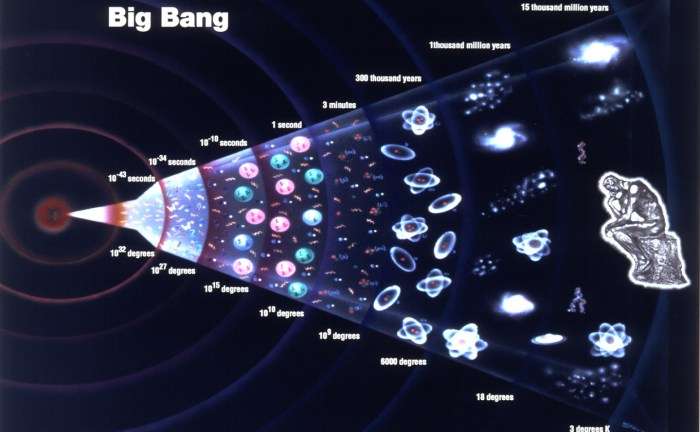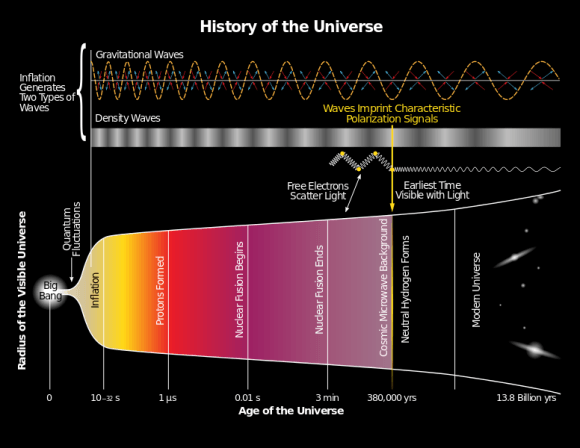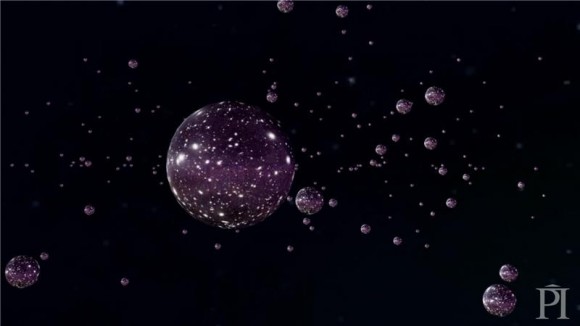Space Theories
Theories related to the creation of Universe
The Big Bang theory
How was our Universe created? How did it come to be the seemingly infinite place we know of today? And what will become of it, ages from now? These are the questions that have been puzzling philosophers and scholars since the beginning the time, and led to some pretty wild and interesting theories. Universe was created in a massive explosion that not only created the majority of matter, but the physical laws that govern our ever-expanding cosmos.

This is known as The Big Bang Theory. For almost a century, the term has been bandied about by scholars and non-scholars alike. This should come as no surprise, seeing as how it is the most accepted theory of our origins.
The basics of the theory are fairly simple. In short, the Big Bang hypothesis states that all of the current and past matter in the Universe came into existence at the same time, roughly 13.8 billion years ago. At this time, all matter was compacted into a very small ball with infinite density and intense heat called a Singularity. Suddenly, the Singularity began expanding, and the universe as we know it began.
While this is not the only modern theory of how the Universe came into being – for example, there is the Steady State Theory or the Oscillating Universe Theory – it is the most widely accepted and popular. Not only does the model explain the origin of all known matter, the laws of physics, and the large scale structure of the Universe, it also accounts for the expansion of the Universe and a broad range of other phenomena.

History of the Big Bang Theory:
The earliest indications of the Big Bang occurred as a result of deep-space observations conducted in the early 20th century. In 1912, American astronomer Vesto Slipher conducted a series of observations of spiral galaxies (which were believed to be nebulae) and measured their Doppler Redshift. In almost all cases, the spiral galaxies were observed to be moving away from our own.
In 1922, Russian cosmologist Alexander Friedmann developed what are known as the Friedmann equations, which were derived from Einstein's equations for general relativity. Contrary to Einstein's was advocating at the time with his a Cosmological Constant, Friedmann's work showed that the universe was likely in a state of expansion.
In 1924, Edwin Hubble's measurement of the great distance to the nearest spiral nebula showed that these systems were indeed other galaxies. At the same time, Hubble began developing a series of distance indicators using the 100-inch (2.5 m) Hooker telescope at Mount Wilson Observatory. And by 1929, Hubble discovered a correlation between distance and recession velocity- which is now known as Hubble's law.

Bubble Theory
Never mind the big bang; in the beginning was the vacuum. The vacuum simmered with energy (variously called dark energy, vacuum energy, the inflation field, or the Higgs field). Like water in a pot, this high energy began to evaporate – bubbles formed.

Each bubble contained another vacuum, whose energy was lower, but still not nothing. This energy drove the bubbles to expand. Inevitably, some bubbles bumped into each other. It’s possible some produced secondary bubbles. Maybe the bubbles were rare and far apart; maybe they were packed close as foam. But here’s the thing: each of these bubbles was a universe.
Inflation holds that in the instant after the big bang, the universe expanded rapidly – so rapidly that an area of space once a nanometer square ended up more than a quarter-billion light years across in just a trillionth of a trillionth of a trillionth of a second. It’s an amazing idea, but it would explain some otherwise puzzling astrophysical observations.
The real significance of this work is as a proof of principle: it shows that the multiverse can be testable. In other words, if we are living in a bubble universe, we might actually be able to tell.
